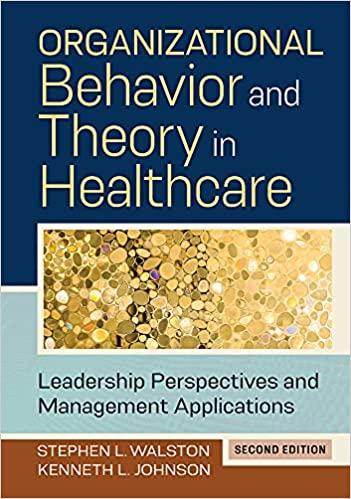How is this an example of primary and secondary emotions? How does this demonstrate the lasting impact
Question:
How is this an example of primary and secondary emotions? How does this demonstrate the lasting impact of inappropriate expression of emotions?
Mike has been the CEO of BCCH for almost two years. He is a smart, hard-working person, but often has difficulty relating to others.
Most of the time he is fine, but if he becomes angry, he sometimes screams at people to assert his authority. Often this happens over small things. The last time was over a spilled food tray on a nursing unit. Mike perceived that one of the nursing aides had spilled the tray through carelessness.
He gave the person a piece of his mind and insisted that the nursing supervisor put a formal write up in the employee’s personnel folder. These episodes had happened only twice at BCCH, but after the second time it appeared to Mike that most people showed him more respect. At least, they seemed respectful to his face. Of course, they rarely spoke with him.
Mike was certain that his employees liked him and that he was a good leader. When he gave directions or proposed ideas in meetings, people nodded and appeared to agree with him. He had dramatically improved the financial health of the hospital and received compliments from his regional vice president. Yet, all was not right.
Mike was disheartened to learn that he was rated especially low in the new hospital employee survey that his corporation had conducted two months before. Many of the employees claimed that they did not know him and indicated that he was not visible. To address this, he committed to carving time out from his meeting-packed days to walk through the hospital and greet employees. To be sure it happened, he made it the first and the last thing he did each day, taking 20–25 minutes to walk through each department starting at 7:30 a.m. and again at 5:00 p.m. Mike was a very busy man, so he did not spend much time as he walked through. Only infrequently would he stop to speak with someone. Most of the time he only walked through a department and said hello. If he stopped, it generally would be to talk to a physician. Over the next few months, he faithfully followed his twice-daily departmental visits. He was certain that he was becoming more visible and employees must be more confident in him.
Step by Step Answer:

Organizational Behavior And Theory In Healthcare Leadership Perspectives And Management Applications
ISBN: 9781640553026
2nd Edition
Authors: Kenneth L. Johnson, Stephen L. Walston





